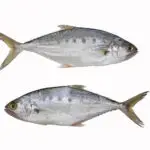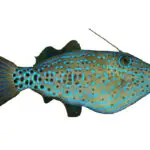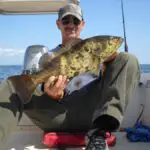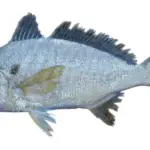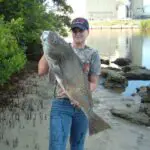Today we are talking all things pinfish traps!
They are one of our favorite (and most efficient) ways to amass huge amounts of bait, and save some dough, all while you’re asleep!
Pinfish traps are a great option for the angler who likes to save time and plan ahead.
Read on below to find out how to load up your pinfish traps this season!
This post may contain affiliate links. As an Amazon Associate, I earn from qualifying purchases
Table of Contents
- What Are Pinfish Traps?
- Which is the Best Pinfish Trap?
- Where Should You Put Pinfish Traps (Ideal Habitat)?
- Best Bait for Pinfish Traps?
- How Long Can You Leave a Pinfish Trap Out?
- How Long Will Pinfish Live in a Trap?
- What Else Can You Catch in Pinfish Traps?
- How To Weigh Pinfish Traps Down?
- Pinfish Trap Best Practices
- Related Posts
What Are Pinfish Traps?
Pinfish traps are mesh or metallic box-shaped cages that are submerged in order to attract and trap pinfish. Bait is put inside to attract the pinfish, and there is a small opening large enough for them to swim inside. Once the fish swims inside, it is tough for them to find their way back out.
You do not need to be a commercial fisherman or an expert to use a pinfish trap.
They are simple and easy to use, and a great way to load up on fresh live bait.
Which is the Best Pinfish Trap?
The best pinfish trap for you depends on the size of the pinfish in the area where you will be trapping. Each pinfish trap will feature a slightly different-sized fish opening, and choosing a trap with a similar-sized opening to the pinfish’s bodies will produce the best results.
The Frabill Pinfish Trap, is made of durable mesh-shaped steel that is dipped in vinyl to prevent rust and ensure longevity.

The fish opening on this trap is on the larger side, so it is best used in areas where thicker pinfish are common. It also has easy-grab handles on the top, which really come in handy when lifting into the boat or onto the dock.
The Promar Collapsible Live Bait Trap is also a great option. It is best suited for anglers who do not have enough storage space for the more durable, rigid metallic traps.

Where Should You Put Pinfish Traps (Ideal Habitat)?
Pinfish are most often found in shallow waters near some type of structure. Placing pinfish traps in shallow water near seawalls is a great place to start, and you should look out for algae, barnacles, and other signs of marine life that could attract pinfish to the area.
One of the best tips for choosing where to leave a pinfish trap is to manually check an area for pinfish.
Using a small lightweight artificial lure and a regular fishing rod, cast around prospective spots and feel for pinfish bites. Place the trap in an area where you get plenty of bites.
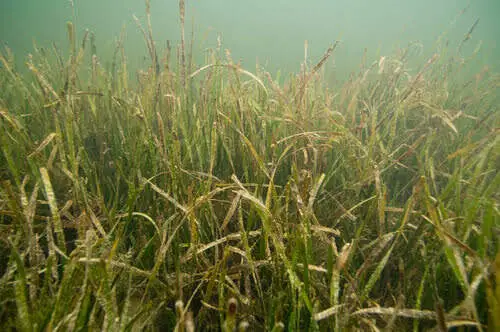
Best Bait for Pinfish Traps?
Pinfish are known to eat just about anything, so anglers should not spend too much money when filling their pinfish traps. The best baits for pinfish are the most pungent; squid, old shrimp, and cut bait are often used.
Many anglers use cat or dog food because they are affordable and smell strong.
Other anglers will save table scraps and any other food that will otherwise go unused.
You can even use fish carcasses or frozen mullet!
Some anglers elect to buy cheap cans of clams or oysters, as they release tons of scents into the water, at a low price.
How Long Can You Leave a Pinfish Trap Out?
Pinfish traps can fill up fairly quickly, especially when placed correctly and filled with pungent bait. For this reason, it is usually best to leave a pinfish trap submerged for 24 hours or less. It is not recommended to leave a pinfish trap out for more than 48 hours in any circumstance.
When placed correctly, it is possible for a pinfish trap to fill up in as little as one hour. For this reason, many anglers will hang around for a while and fish and area after placing a trap.
Once they have finished fishing, they will check and empty the trap before leaving it overnight.
You should only place out baited pinfish traps when you intend to fish and can check them regularly.
How Long Will Pinfish Live in a Trap?
Pinfish can live a few days inside of a fish trap, but they will eventually die if the trap is not retrieved. Once the bait runs out inside the trap, the pinfish will be left with nothing to feed on and can die of starvation.
While it is never recommended to intentionally let bait fish die, many anglers have found bait traps full of crabs when hauling in lost or abandoned traps.
Keeping your pinfish alive and healthy is very important when it comes to fishing. That is why all those big sportfishing boats have huge live wells with high-tech aeration systems!
What Else Can You Catch in Pinfish Traps?
Pinfish traps will catch any fish that is small enough to find its way in, and many accidental catches will come as a result of setting pinfish traps. Many of these accidental catches also can make great live bait, such as perch, small sunfish, and sea bream.
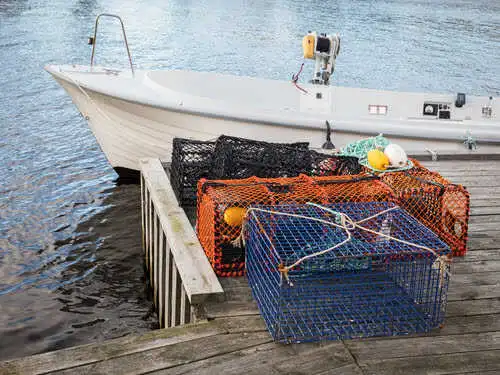
Due to the fact that all kinds of different fish have a tendency to swim into traps, many manufacturers will simply label their products as “bait fish traps.”
It is not necessary to purchase a trap marketed specifically for catching pinfish, as long as the fish opening is the correct size (between 2″-4″ is ideal.)
You May Also Like: The Top 10 Game Fish You Can Catch With Pinfish (W/Tips!)
How To Weigh Pinfish Traps Down?
While metallic pinfish traps will sink down to the bottom quickly, there are certain collapsible mesh pinfish traps that are much lighter. Lead fishing weights can easily be secured to the corners of these lighter pinfish traps, helping them sink to the bottom and stay put.
While it is usually not necessary to weigh most pinfish traps down, this is a technique that should always be practiced in areas with a strong current.
A heavier trap is more likely to stay put, and there is nothing worse than a trap full of pinfish being swept away into the ocean.
Pinfish Trap Best Practices
When it comes to the best practices for using pinfish traps, the most important practice is to check and retrieve bait traps regularly. Emptying bait traps at regular intervals is the best way to keep pinfish from dying inside once the food runs out.
Pinfish traps should also always be clearly marked to help avoid any confusion, lost traps, or ocean pollution.
Attaching a buoy to a fishing trap is the best way to easily locate and retrieve it; a line can also be tied to nearby trees, docks, or structures when permitted.
Always be mindful of where you put your traps. Never place pinfish traps in busy waterways, channels, near boat ramps, or other high-traffic areas.
You May Also Like: How To Cast Net For Mullet: A Quick (EASY) Guide
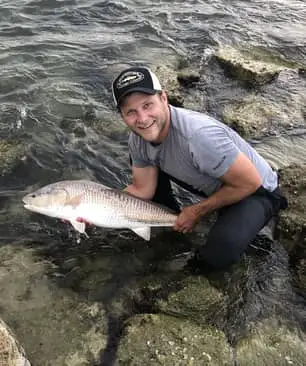
Growing up in Florida, I’ve been surrounded by saltwater my entire life…and I love sharing my passion with others.
To learn more about why I started Saltwater Mecca, visit the ABOUT page.
Thank you for reading this article. Browse around & have some fun!

